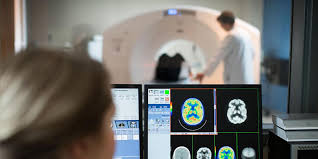The Role of a Radiologic Technologist in Modern Healthcare
Radiologic technologists, also known as radiographers, play a crucial role in the healthcare industry by performing diagnostic imaging examinations such as X-rays, CT scans, MRIs, and mammograms. These highly skilled professionals work closely with radiologists and other healthcare providers to help diagnose and treat various medical conditions.
One of the key responsibilities of a radiologic technologist is to operate imaging equipment to produce high-quality images of patients’ internal structures. They must follow strict protocols to ensure accurate results while prioritizing patient safety and comfort throughout the procedure.
In addition to operating imaging equipment, radiologic technologists are responsible for positioning patients correctly to obtain the best possible images. They must also communicate effectively with patients to explain procedures, address concerns, and ensure cooperation during the imaging process.
Furthermore, radiologic technologists play a vital role in maintaining patient records and ensuring that images are properly labeled and archived for future reference. They must adhere to ethical standards and patient confidentiality guidelines to protect sensitive medical information.
Continuous education and training are essential for radiologic technologists to stay updated on advancements in imaging technology and techniques. Many professionals choose to specialize in specific areas such as computed tomography (CT), magnetic resonance imaging (MRI), or mammography to enhance their skills and career opportunities.
In conclusion, radiologic technologists are indispensable members of the healthcare team who contribute significantly to the diagnosis and treatment of various medical conditions. Their expertise in diagnostic imaging plays a crucial role in improving patient outcomes and promoting overall health and well-being.
5 Essential Tips for Radiologic Technologists: Safety, Accuracy, and Professional Growth
- Ensure proper positioning of patients for accurate imaging results.
- Practice radiation safety protocols to protect yourself and patients from unnecessary exposure.
- Stay updated with the latest advancements in radiologic technology through continuing education.
- Develop strong communication skills to effectively interact with patients during procedures.
- Maintain a high level of attention to detail to avoid errors in image interpretation.
Ensure proper positioning of patients for accurate imaging results.
Ensuring proper positioning of patients is a critical tip for radiologic technologists to achieve accurate imaging results. By carefully positioning patients according to specific protocols and anatomical landmarks, technologists can obtain clear and detailed images that aid in the diagnosis and treatment of medical conditions. Proper patient positioning not only enhances the quality of imaging studies but also minimizes the need for repeat examinations, reducing patient discomfort and radiation exposure. This attention to detail and precision in positioning reflects the professionalism and dedication of radiologic technologists in delivering high-quality healthcare services.
Practice radiation safety protocols to protect yourself and patients from unnecessary exposure.
It is essential for radiologic technologists to prioritize radiation safety protocols to safeguard both themselves and their patients from unnecessary exposure. By adhering to strict safety guidelines and utilizing protective measures such as lead aprons, shields, and collimators, technologists can minimize the risks associated with ionizing radiation. Prioritizing safety not only ensures the well-being of healthcare professionals but also contributes to the overall quality of patient care by reducing potential harm from excessive radiation exposure.
Stay updated with the latest advancements in radiologic technology through continuing education.
Staying updated with the latest advancements in radiologic technology through continuing education is essential for radiologic technologists to enhance their skills and knowledge. By participating in ongoing training programs and courses, these professionals can stay abreast of new imaging techniques, equipment, and best practices in the field. This commitment to continuous learning not only ensures that radiologic technologists provide high-quality care to patients but also opens up opportunities for career advancement and specialization in specific areas of diagnostic imaging.
Develop strong communication skills to effectively interact with patients during procedures.
Developing strong communication skills is essential for radiologic technologists to effectively interact with patients during procedures. Clear and empathetic communication helps build trust and rapport with patients, easing their anxiety and ensuring cooperation throughout the imaging process. By explaining procedures, addressing concerns, and providing reassurance, radiologic technologists can create a comfortable environment for patients, resulting in better quality images and overall patient satisfaction. Effective communication also allows technologists to obtain accurate medical histories and information from patients, contributing to more precise diagnoses and treatment plans.
Maintain a high level of attention to detail to avoid errors in image interpretation.
To excel as a radiologic technologist, it is imperative to maintain a high level of attention to detail to avoid errors in image interpretation. Precision and accuracy are paramount in this field, as even the smallest oversight can have significant implications for patient diagnosis and treatment. By meticulously reviewing and analyzing imaging results with keen attention to detail, radiologic technologists can ensure that healthcare providers receive accurate information for making informed decisions about patient care.
Tags: continuing education, continuous education, ct scans, diagnostic imaging examinations, ethical standards, healthcare, imaging equipment, internal structures, lead aprons, mammograms, mris, patient positioning, patient records, patient safety, radiation safety protocols, radiologic technologist, radiologic technology advancements, radiologists, training programs, x-rays
